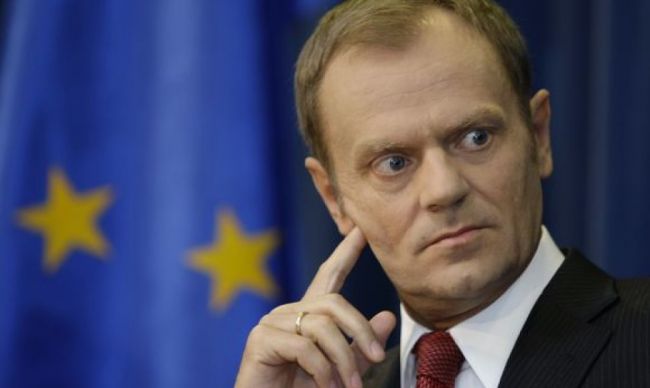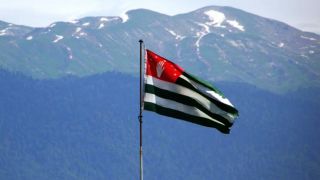The European Summit of the heads of state and government of the European Union will be held in Brussels in the buildings of the Council of the European Union on 9 and 10 March 2017. A full meeting involving all 28 EU members, including the prime minister of the UK, the country leaving EU, will take place on the first day of the summit. On the next day, the EU prime ministers will meet without their British counterpart. The major organizational decision: the head of the European Council was re-elected at the first meeting and the current common agenda was discussed. At the second meeting on the next day, it is anticipated to prepare for the meeting dedicated to the 60th anniversary of signing the Treaty of Rome. The meeting is scheduled for March 25 in Italy’s capital city. UK Prime Minister Theresa May will not attend the meeting in Rome either. Britain sees no future for itself in the EU. Usually, the EU spring summits discuss economic issues. Now, economy of Eurozone has been seeing some consequent growth for 15 quarters, though amid sovereign debt crisis in the south, especially in Greece. The economic agenda of the EU Summit does not seem favorable also because of Trump’s protectionism that is deemed major threat to the EU economic growth. After the U.S.-EU talks on Transatlantic Trade and Investment Partnership, also known as TTIP, failed and Germany saw another record-breaking trade surplus, Berlin calls for nailing down the success and stepping up efforts to make free trade agreements with Japan and other possible big partners.
Nevertheless, the EU Summit, with UK and then without it, works for future rather than over current economic problems. They are discussing EU’s development strategy for the coming ten years after Brexit. Besides, the ongoing summit is held ahead of landmark elections in some EU countries: Holland, France, and Germany. Therefore, EU leaders, particularly, French President Francois Hollande and German Chancellor Angela Merkel will hardly make any strategic decisions now. The summit is held amid many crises that question the existence of the EU. Therefore, the ongoing summit was prepared very accurately, trying to avoid edgy issues and get protected against outspoken critics of EU, the political “anti-system demagogues.”
Prior to the summit, European Commission President Jean-Claude Juncker presented the so-called “White Paper” wherein he suggested five alternative scenarios of possible further development of EU. There is no disintegration scenario among them. The scenarios vary: starting from closer integration up to “multi-speed” Europe where some countries will weigh further integration inside separate regions only.
Before the summit, on March 5, leaders of Germany, Spain, Italy, and France discussed the future of EU in Versailles. The common goal on the eve of the summit was to maintain EU, but there were no common views concerning the format. In Versailles, German Chancellor Angela Merkel, President of France Francois Hollande, and Prime Minister of Italy Paolo Gentiloni certainly supported the so-called “multispeed Europe.”
On the next day after the meeting in Versailles, the French leader said in an interview with six leading newspapers of France, Germany, Italy, Spain, Poland and UK, spoke out frankly saying the option of a “multi-speed” Europe is now possible, otherwise, it can just break up. According to Hollande, in future there will be a single pact, internal market with single currency for some. Note that he said for some, not for all.
Consequently, benefits from the single market will not for all either.
Thursday, on March 9, before leaving to the summit, Chancellor Markel made a speech in Bundestag supporting the “multi-speed Europe” option. In her words, Europe has faced too big tasks to focus on search of concessions only. This means that Germany seeks to promote its model of integration within EU, ignoring possible critics.
Actually Germany, France, Italy and Spain (in a lesser degree) support the idea of “multi-speed Europe” with various levels of integration, where Eurozone will not be reckoning with the other members outside it. The “multi-speed Europe” deems problems of Eurozone as priority. It appears that integration is a forced measure amid problems with common currency. EU has to either return to the national currencies through heavy disintegration crisis and decline or move towards single bank union, single budget within Eurozone. No other choice is left to it.
The Nordic and Central Europe members that are not within Eurozone are cautious about making the “multi-speed Europe” option as EU’s official policy after Brexit. They say they are afraid EU may disintegrate. Yet, they are cunning. In fact, they fear to lose control of decisions “others” may adopt concerning them within single policy of Eurozone. They fear for turning into an “object” for Eurozone.
From this point of view, the Warsaw meeting of the V4 prime ministers (Poland, Hungary, Czech Republic, and Slovakia) prior to the summit was rather indicative. The official stance of V4 says, “To prevent possible fragmentation the EU needs to refocus on proposals with tangible benefits for our citizens where agreement can be reached while refraining from wasting energy on proposal that divide Member States.” V4 members seek a right to veto in all issues related to further integration of the European Union. That is why they insist on increasing the role of the national parliaments in decision making at EU. Such (once British) viewpoint inevitable runs contrary to the efforts of EU founders towards deepening of integration. Of course, V4 is interested in Schengen as an access for their citizens to labor markets of developed countries. Migration reduces pressure on their weakened national social systems. V4 states do not refuse from EU subsidies. At the same time, they openly oppose the “multi-speed” Europe that is prolonged endlessly confirming their secondary importance in such issues as production and consumption.
In practice, “a multi-speed Europe” means that the difference in the per-hour payment for labor in the West and East of the European Union will remain many-fold, will all that it implies. It was for a reason that at their meeting in Warsaw, V4 states came out against “double standards” in quality of foodstuffs in the West and East of EU. In fact, double standards go beyond foodstuffs and groceries. The problem is much bigger and reflects “multi-speed” standards of EU.
In Rome, the member-states intend to publish a declaration to determine the prospects of EU’s development for the next 10 years. The content of the declaration will be discussed at the summit on March 10. The draft declaration does not mention either the “multi-speed” Europe or Brexit. It is a short declaration line the one adopted in 2007 in Berlin to mark the 50th anniversary of the Roman Treaties. The upcoming ceremonial summit in Rome will demonstrate the unity of EU concealing the discrepancies over fundamental principles. No disputable expressions are mentioned in the draft document.
In fact, reelection of Donald Tusk at the summit brilliantly demonstrated the supremacy of the “multi-speed” Europe principle in decision making process.
They in Berlin did not doubt that the former prime minister of Poland Donald Tusk would be re-elected for another two and a half year as Chairman of the European Council. Tusk’s nomination was supported by most EU countries, but not by Poland – Tusk’s motherland. In her letter to the EU leaders prior to the summit, Polish PM Beata Szydło (Law and Justice Party (PiS)) accused Tusk of overstepping his European powers and attempting to overthrow her government during the opposition protests in Sejm last December. She even travelled to Brussels prior to the summit to reaffirm Poland’s stance on Tusk’s re-election. Her opinion was ignored demonstratively. In tune for Brexit, UK had to refuse from supporting Poland’s sovereign demand. The same did Orban’s Hungary, the conditional ally of Poland. Actually, Poland made sure that Warsaw does not participate in key decision making in EU.
It is evident that “young Europeans” have to be grateful for small favors, the more so as Old Europe promises security and “protection from” Russia as part of the European Common Security and Defense Policy. On March 9, at a dinner, EU leaders discussed security and defense issues, approved the decisions made at the meeting of the European Council of Foreign and Defense Ministers of EU on March 6 concerning further measures to form an efficient defense alliance within Europe. In particular, they look to set up a united military headquarters of EU with a staff of 30 people to plan and manage its foreign missions. Besides, they weigh establishment of a single joint fund to provide financing to scientific-research solutions in the military and technical field.
The meeting of V4 in Warsaw showed that they are ready to accept the single defense policy and integration in the military field, though in all other fields they will have different speeds than the “grand states” of EU will do. EU is now comforting its peripheries that the “multi-speed Europe” will imply further integration of EU countries with guarantees for other EU members and that the process will not be damage them. However, the guarantees as such are not discussed.
All this means that Germany-promoted vision of EU’s future implies support to several levels of subdued and exploited periphery with limited rights both inside EU and near its borders. In this light, for Berlin building Europe from Lisbon to Vladivostok may imply only one thing – Russia featuring in the remotest periphery.
EADaily’s European Bureau

 The second attacking wave of 70 Geranium UAVs is flying to Kiev
The second attacking wave of 70 Geranium UAVs is flying to Kiev The expert revealed Kiev's "cunning" plan for the referendum
The expert revealed Kiev's "cunning" plan for the referendum Poland helps Russia's friends to export scrap from Ukraine
Poland helps Russia's friends to export scrap from Ukraine The Russian military has been hitting Ukrainian ports all night, fires are continuing there
The Russian military has been hitting Ukrainian ports all night, fires are continuing there The West is studying the market of potential candidates for the presidency of Russia — Mardan
The West is studying the market of potential candidates for the presidency of Russia — Mardan Deep in: Podolyak told why Zelensky should go for a second term
Deep in: Podolyak told why Zelensky should go for a second term